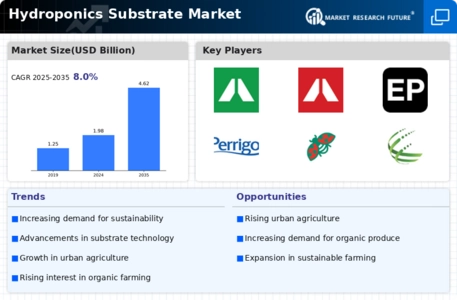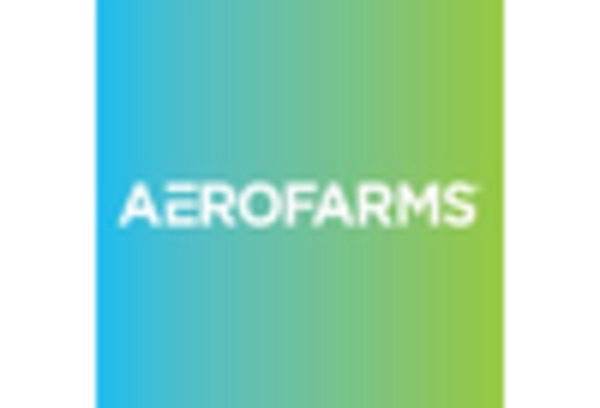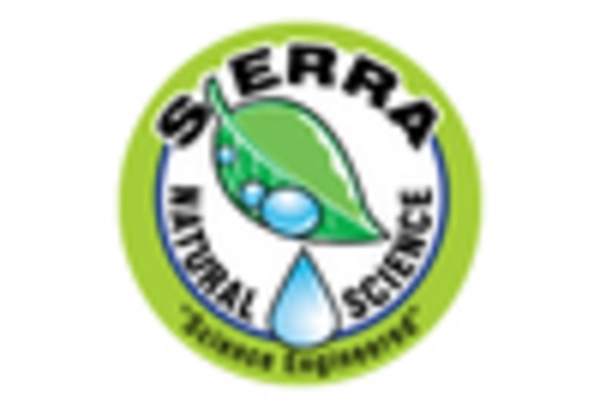Health and Nutrition Awareness
The rising awareness of health and nutrition is a significant driver for the Hydroponics Substrate Market. Consumers are increasingly seeking fresh, pesticide-free produce, which hydroponically grown crops can provide. Hydroponic systems often utilize organic substrates, which align with the growing demand for clean and healthy food options. Market data indicates that the organic food sector is expanding rapidly, with consumers willing to pay a premium for products perceived as healthier. This trend is likely to propel the Hydroponics Substrate Market forward, as more growers adopt hydroponic methods to cater to health-conscious consumers.
Government Support and Policies
Government support and favorable policies are crucial factors influencing the Hydroponics Substrate Market. Many governments are recognizing the potential of hydroponics to enhance food security and promote sustainable agricultural practices. Initiatives such as grants, subsidies, and research funding for hydroponic technologies are becoming more common. This support not only encourages existing growers to adopt hydroponic systems but also attracts new investments into the Hydroponics Substrate Market. As policies evolve to favor innovative agricultural solutions, the market is likely to witness accelerated growth, driven by both public and private sector collaboration.
Sustainable Agriculture Practices
The Hydroponics Substrate Market is increasingly influenced by the rising adoption of sustainable agriculture practices. As consumers become more environmentally conscious, there is a growing demand for substrates that minimize environmental impact. Hydroponic systems, which utilize substrates such as coconut coir and rock wool, are often seen as more sustainable alternatives to traditional soil-based agriculture. This shift is supported by data indicating that hydroponic systems can use up to 90% less water than conventional farming methods. Consequently, the Hydroponics Substrate Market is likely to experience growth as more farmers and urban gardeners seek eco-friendly solutions that align with sustainability goals.
Urbanization and Space Constraints
The ongoing trend of urbanization significantly impacts the Hydroponics Substrate Market. As urban populations continue to grow, space constraints for traditional agriculture become more pronounced. Hydroponics offers a viable solution, allowing for food production in limited spaces, such as rooftops and vertical farms. This trend is supported by data indicating that urban agriculture could potentially meet a substantial portion of city food demands. Consequently, the Hydroponics Substrate Market is likely to benefit from increased investments in urban farming initiatives, as city planners and entrepreneurs seek to leverage hydroponic systems to address food security challenges in densely populated areas.
Technological Advancements in Hydroponics
Technological advancements play a pivotal role in shaping the Hydroponics Substrate Market. Innovations in substrate materials and hydroponic systems have led to improved crop yields and resource efficiency. For instance, the development of advanced substrates that enhance nutrient retention and aeration has been instrumental in optimizing plant growth. Market data suggests that the integration of smart technologies, such as sensors and automated nutrient delivery systems, is becoming increasingly prevalent. These advancements not only enhance the efficiency of hydroponic systems but also attract new entrants into the Hydroponics Substrate Market, thereby fostering competitive dynamics and driving overall market growth.


















Leave a Comment